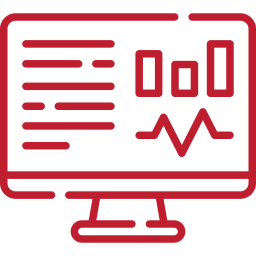When users visit your website, you only have one chance to make a good impression. Certain features on a site can turn them away quickly, such as poor navigation, slow load time, or cluttered text and images.
For the sake of this article, let’s say your site is clean, secure, and on brand. This should be enough to convince users to explore your products and make a final purchase before they exit, right? Nope, a user-friendly website is still not enough to convert users into loyal customers.
In a previous article, we discussed the importance of identifying end goals for your marketing campaigns. For many businesses, the end goal of a website is to have users purchase a product online or in stores. But what about the journey that takes place in-between? In digital marketing, this is what we call user engagement.
To build relationships with users, you first need to engage your audience(s) with features that cater to their needs. We say this time and again, but it can’t be stated enough: users are only on your site because they have a particular want or need. Your job is to demonstrate that you have the best solution.

How Do You Engage Customers?
Put yourself in the users’ shoes for a second. Next, think about what you want before buying a new product or contracting a service. You might prefer a bit more information and time to evaluate the cost vs. value before buying. After all, with anything new, you’ll have questions and will need to weigh your options first, so that the final decision is made by you, not by impulse.
Side Note: Though impulse purchases are effective in retail marketing, you’re likely focused on making life-long customers. That means, you don’t want your users to feel “buyers remorse” after they make a purchase. You want them to feel confident and informed in their decision, so they buy from you again and share their positive experiences with others.
We recommend supplying users with valuable resources they can’t find anywhere else, such as downloadable eBooks, infographics, information packets, how-to guides, recipes—you name it. This will provide a personalized experience that satisfies one of the most important aspects of a buyer’s journey:
- The Need to Know: Users have questions. They want to know how your product works, what to expect, and how it will benefit them long term. They also want to do their research first. By providing them with opportunities to learn more about your product, you’re giving them the tools to become proactive in the final decision.
How To Give Users What They Want
Back in our previous article, we shared the scenario of a medical device company that manufactured heart-rate monitors for patients living with a pre-existing condition. If you were in the market for a heart-rate monitor, you might wonder:
- How is this device different from others?
- Is It more effective than other brands?
- Will it fit into my treatment plan?
- How will it benefit me in the future?
Though you can address these questions on your site, you also want to provide users access to personalized resources to use in real life.
For example, you can provide a link on your homepage to “Request More Information.” Too often, websites will feature calls to action like “shop now” or “contact us” right at the beginning of the user’s journey.
Though these are helpful, if this is a user’s first interaction with your company, the customer may not be ready to buy your product or talk to someone on your team. It’s likely they want more information, so they can compare it with other products and decide which device is best for their treatment.
Therefore, having additional information in the form of a downloadable packet that contains details on how the device works, peer-reviewed studies on its effectiveness, and testimonials from other customers sharing their positive experiences.
But don’t just stop there.
In addition to an information packet, consider adding other content resources, such as video tutorials on how to use your product, a blog page for lifestyle tips, or even an eBook packed with healthy recipes for people living with a heart condition. Having these content assets available shows users that you are more than a company. You’re an advocate and go-to resource for their individual condition.
There are two other essential benefits to this type of user engagement:

Data & Reporting
To access these resources, you’ll need to require users to provide at least a name and email address (to send it digitally) or a home address (to mail it physically). This provides your company with invaluable information for tracking customer demographics and behaviors, as this data will help inform your future marketing campaigns.
Just be sure to update your privacy policy to let users know how you will collect and use this information.

Sales Touchpoints
If a user is sharing her personal email to download a resource from your site, it’s fair to say she is interested in learning more about your product and may convert at a later time. To keep the momentum going, you may decide to do one of two touchpoints:
- Create an email drip campaign that allows you to stay connected to your customers and keep them informed. With each email drip, you can guide the user closer to the final goal of completing a sale and becoming a customer.
- If you plan to physically mail information to users, you may designate an individual from your company to follow up with patients via phone to confirm they received the packet, and most importantly, check to see if they have any further questions.
This will ensure you provide a personalized experience that caters to each user’s needs, without seeming too pushy or invasive. And with each positive interaction users have with your company, they will establish trust and confidence in your brand. Remember, people have questions. It’s up to you to provide the answers, so they feel confident in taking the next step from user to customer.
About Brandography
Located in downtown Minneapolis, Brandography is a full-service web firm that offers SEO, PPC, Amazon optimization, web design and development, branding, and content marketing services. Our mission is to elevate the success of others and provide measurable, result-driven data to support your marketing efforts and maximize your ROIs.
